
- Biology - Home
- Biology - Structure and Functions
- The Fundamental Unit of Life
- Biology - Tissues
- Biology - Animal Tissue
- Diversity in Living Organisms
- Biology - Plantae Kingdom
- Biology - Animalia Kingdom
- Biology - Vertebrata
- Biology - Transportation in Humans
- Biology - Transportation in Plants
- Biology - Excretion
- Biology - Control and Coordination
- Biology - Hormones in Animal
- How do Organisms Reproduce?
- Biology - Sexual Reproduction
- Biology - Reproduction in Animals
- Reaching the Age of Adolescence
- Biology - Heredity and Evolution
- Biology - Life Processes
- Biology - Respiration
- Microorganisms: Friend and Foe
- Biology - Why do We Fall Ill
- Biology - Natural Resources
- Biology - Our Environment
- Conservation of Plants and Animals
Biology - The Fundamental Unit of Life
Introduction
The fundamental unit of life is cell.
Cell was first discovered by Robert Hooke in 1665 in a simple microscope.
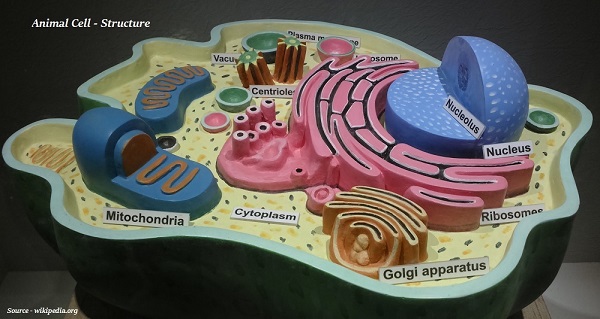
In 1674, Leeuwenhoek, with the help of developed microscope, discovered the free living cells in pond water.
In 1831, Robert Brown had discovered the nucleus in the cell.
In 1839, Purkinje used the term protoplasm for the fluid substance found in the cell.
The cell theory was proposed by Schleiden (1838) and Schwann (1839).
According to the cell theory, all the plants and animals are composed of cells and that the cell is the basic unit of life.
In 1855, Virchow further expanded the cell theory and suggested that all cells arise from pre-existing cells.
In 1940, the discovery of electron microscope made possible to observe and understand the complex structure of the cell.
Unicellular Organisms
The single cellular organisms, such as Amoeba, Chlamydomonas, Paramoecium, and bacteria, are known as unicellular organisms.
Multicellular Organisms
The organisms consisting of many cells are known as multicellular organisms. E.g. human being, animals, birds, etc.
Significant Characteristics of Cells
Each living cell has the aptitude to perform certain basic functions that are characteristic of all living forms.
Each such cell has certain specific components within it known as cell organelles.
Different types of cells have different function and each cell organelle performs a special function.
These organelles collectively constitute the basic unit of life known as cell.
All cells are found to have the same organelles, irrespective of their different functions and the organism they found in.
Structural Organization of Cell
-
Following are the three basic features that every cell possesses −
Plasma Membrane/Cell Membrane
Nucleus
Cytoplasm
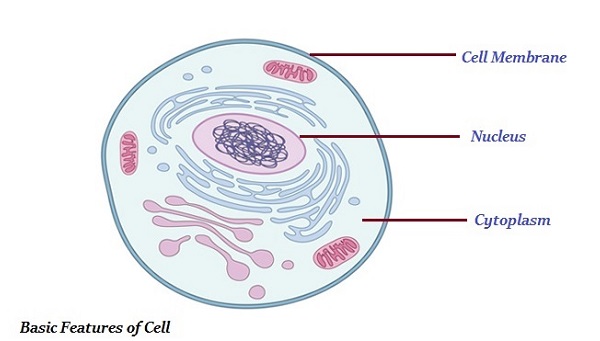
Lets discuss each one of them in brief −
Plasma Membrane/Cell Membrane
Plasma membrane is the outermost covering layer of the cell (as shown in the image given above).
Plasma membrane allows certain materials to enter inside the cell and come out from the cell; therefore, it is known as selectively permeable membrane.
The movement of water molecules through the selectively permeable membrane is known as osmosis.
Cell Wall
Plant cells have an addition protecting cover known as cell wall (absent in animal cell).
The cell wall lies outside the plasma membrane; likewise, it also covers plasma membrane.
The cell wall is essentially composed of cellulose.
Nucleus
Nucleus or nuculeus is a Latin term and its meaning is kernel or seed.
The nucleus has a double layered covering, which is known as nuclear membrane (see the image given above).
The nuclear membrane has some pores, which allow certain materials come inside (in nucleus) and go outside (in the cytoplasm).
The most significant feature of nucleus is it contains chromosomes.
Chromosomes are rod-shaped structures and it is visible only when the cell is about to divide.
Chromosomes are composed of DNA and protein.
DNA (Deoxyribo Nucleic Acid) molecules contain inheritance features from parents to next generation.
DNA molecules also contain the information essential for constructing and organizing cells.
Functional segments of DNA are known as genes.
DNA is present as the part of chromatin material.
Chromatin material is visible as entangled mass of thread like structures (as shown in the image given below).
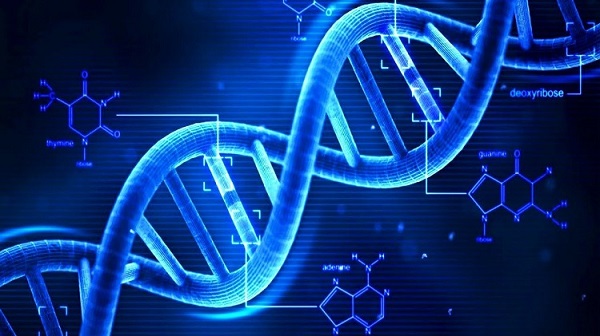
Whenever the cell is about to divide, the chromatin material gets organized into chromosomes.
The nucleus plays a central and significant role in cellular reproduction.
The cell, which has no nuclear membrane, is known as prokaryotes (i.e. Pro = primitive or primary; karyote karyon = nucleus). See the image given below:
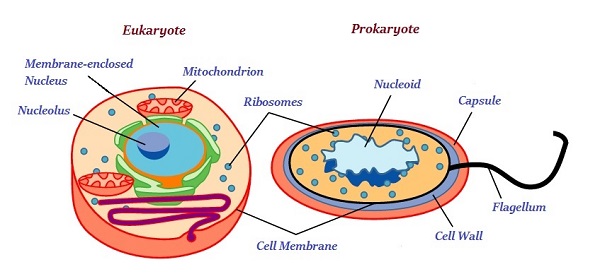
The cell, which has a nuclear membrane, is known as eukaryotes.
Prokaryotic cell does not have many other cytoplasmic organelles those are present in eukaryotic cells (see the image given above).
Cytoplasm
Cells consist of cytoplasm inside the cell membrane, which contains many biomolecules including proteins and nucleic acids.
There are many structures found in the cytoplasm known as cell organelles.
Cell Organelles
-
Following are the major cell organelles that play a major role in the functioning of cell −
Nucleus
Endoplasmic Reticulum
Ribosome
Golgi apparatus
Lysosomes
Mitochondria
Plastids
Vacuoles
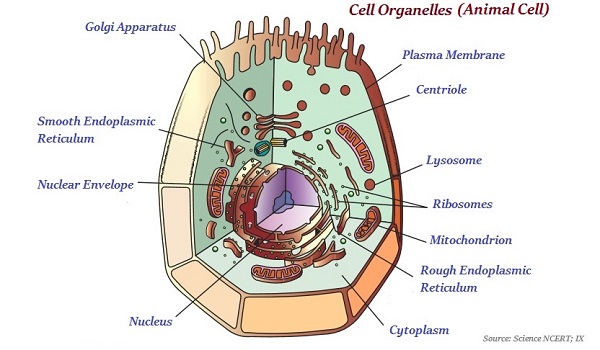
Lets discuss each one in brief −
Nucleus is discussed above.
Endoplasmic Reticulum
The endoplasmic reticulum (or simply ER) is a large network of membrane-bound tubes and sheets (see the image given above).
Based on visual structure, ER is categorized as rough endoplasmic reticulum (RER) and smooth endoplasmic reticulum (SER).
When the ribosome attached on the surface of ER, it is known as Rough Endoplasmic Reticulum and without ribosome, it is known as Smooth Endoplasmic Reticulum.
The SER helps in the manufacturing of fat molecules, or lipids, which is important for cell functioning.
One of the significant functions of ER is to serve as channels for the transportation of materials (especially proteins) in various regions of the cytoplasm and also between the cytoplasm and the nucleus.
Ribosome
The ribosomes, normally, present in all active cells.
Ribosome are the sites of protein manufacturing.
Golgi Apparatus
The Golgi Apparatus is named after the name of its discover Camillo Golgi.
Golgi Apparatus consists of a system of membrane-bound vesicles arranged roughly parallel to each other in stacks known as cisterns (see the image given above).
The significant functions of Golgi Apparatus are the storage, modification, and packaging of products in vesicles.
The Golgi apparatus also helps in the formation of lysosomes.
Lysosomes
Lysosomes are a sort of waste disposal system of the cell.
Lysosomes help in keeping the cell clean by digesting the foreign material as well as worn-out cell organelles.
Lysosomes contain powerful digestive enzymes capable of breaking down all sorts of organic materials.
Lysosome has a typical feature i.e. when the cell gets damaged lysosome most likely bursts and the released enzymes digest their own cell. Because of this reason, lysosome is also known as the suicide bags of a cell.
Mitochondria
Mitochondria, commonly, are known as the powerhouses of the cell.
Mitochondria release the energy required for various chemical activities (essential for the life).
Mitochondria release energy in the form of ATP (Adenosine Triphopshate) molecules.
ATP is popular as the energy currency of the cell.
Mitochondria have their own DNA and ribosomes; hence, they are capable to make some of their own proteins.
Plastids
Plastids are present only in the plant cells (see image given below).
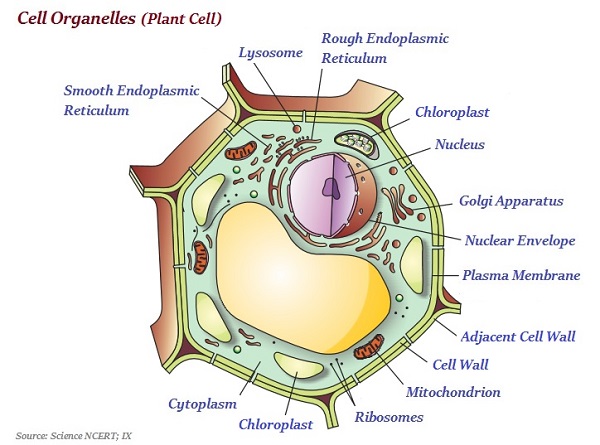
Plastid is categorized as Chromoplasts (it is colored plastids) and Leucoplasts (It is either white or colorless plastids).
Plastids contain chlorophyll pigment, which are known as Chloroplasts.
Chloroplasts play important role in the photosynthesis in plants.
Chloroplasts also contain various types of yellow or orange pigments.
Leucoplasts are the organelles in which some important materials such as starch, oils, and protein granules get stored.
Plastids look like mitochondria (in terms of external structure).
Like the mitochondria, plastids also possess their own DNA and ribosomes.
Vacuoles
Vacuoles are commonly the storage sacs that contain solid or liquid materials.
In animal cell, vacuoles are small; whereas in plant cell, vacuoles are of large size.
Plant cells vacuoles are filled with cell sap and provide turgidity and rigidity to the cell.